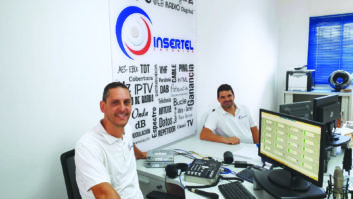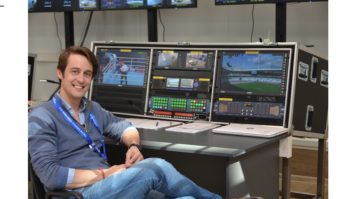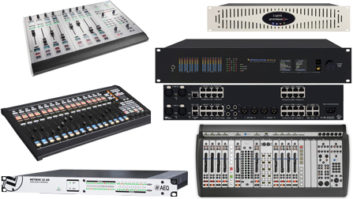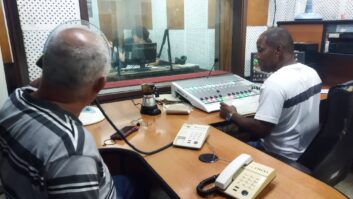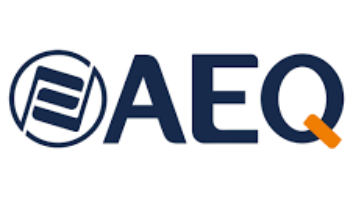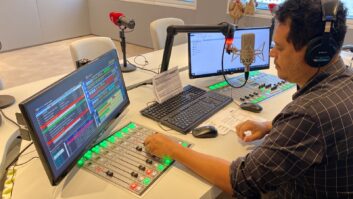LISBON, Portugal — Last May, AEQ provided training sessions on Dante AoIP networks in Lisbon, Portugal. Since 2016 TSF Radio News has been users of many AEQ Dante-based devices, including a BC2000D router, audio mixing consoles, intercom systems, Netbox 32, Netbox 8 and Netbox 4 AoIP interfaces, etc.
I dropped by to say hello and take the chance to refresh my skills in Audinate’s Dante technology. My curiosity was drawn to a new device called Netbox DSP. The representatives from AEQ explained to me what it does, and I committed to evaluate it in a real test environment. I am happy to work with AEQ; they are always open to my contributions and try to adapt their products to our needs whenever possible.
Netbox DSP is a mixing, distributing and processing audio router. Its most innovative feature is the absence of direct audio inputs and outputs. It is able to receive audio from the Dante or AES67 network and then return it, mixed and processed, to be used in other devices or subsystems.
[Read “How to Choose Your Next Radio Console”]
It has a basic front panel since control is entirely performed from a software application. The only features are two power indicators for the redundant power supplies, activity LEDs for the primary and secondary Dante networks and, lastly, a red error indicator.
At the back there are AC power supply sockets, Dante AoIP primary and secondary connectors, a fan and four GPIO connectors. When I asked about this fan, AEQ answered that it only starts when the unit is at risk of overheating and that its speed depends on the temperature inside the device.
[AEQ Designs Remote Network Controllers]
The utility of GPIO signals in AEQ Dante devices offers the possibility of transporting them across the network. For example, I can close a contact in the mixing console (GPIO) and this triggers a macro in the audio matrix in order to perform the required crosspoints to put the studio on-air, for instance. At the same time, I can turn on an indicator that informs the operator in the central control which studio is on air.
The unit that I tested was able to mix and route 96 audio channels, but AEQ has versions managing between 64 and 160 input/output audio channels.
It is all controlled from Netbox RTC software, which allows the user to open different work window instances in order to customize the viewing of the different router devices and which lines to control.
The NetBox DSP has great processing capabilities, which can apply to up to 64 audio channels. These include high-pass filters, low-pass filters, band-pass filters, four-band parametric equalizers, compressors, expanders, limiters, noise gate, delay (up to 10 seconds), audio silence alarm or level metering and test signal generation.
The AEQ Netbox DSP is a unique product in the Dante universe, it offers excellent features with a very limited price. We especially like the high processing capabilities that are included with the unit, and how easy it is to integrate GPIO commands in our IP network using Dante or AES67.
For information, contact Peter Howarth at AEQ Broadcast International in Florida at 1-800-728-0536 or visit www.aeqbroadcast.com.





